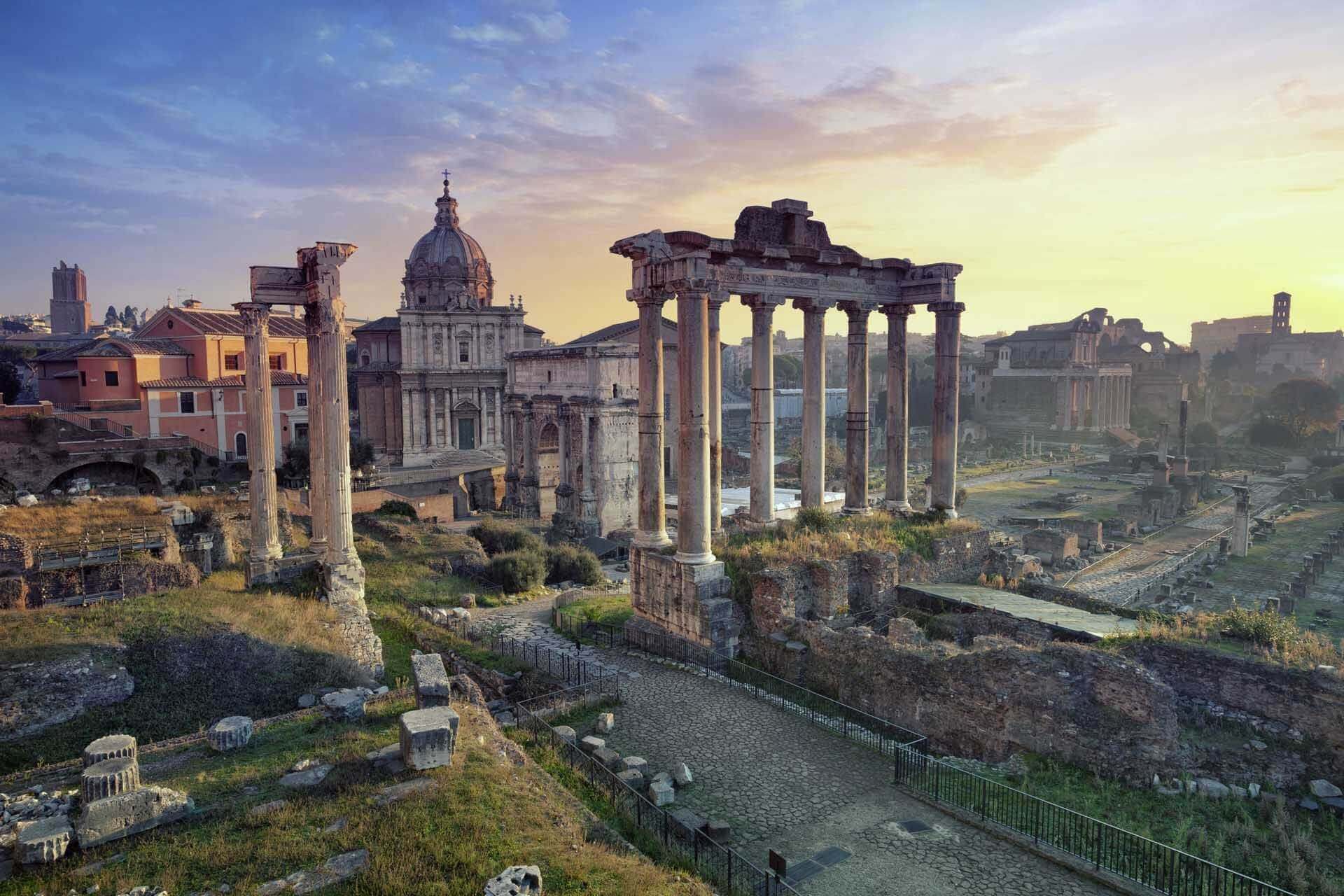Top ancient ruined places in Rome City
Rome is the witness of history. It was the most ancient civilization after the Greek civilization. The Rome empire ruled the entire world. It is the city that contributed to the spread of Christianity around the world.
Everybody wants to travel to Rome because of its magnificence. Its ruined places are so mesmerizing and attract the tour-thirsty people all the time.
Every corner of this city is filled with historical ruins and art. For this reason, tour-lover people always want to visit Rome. Nobody wants to miss traveling to the Rome city. That is why when people get a chance to travel to this beautiful city, they don’t want to lose the opportunity.
Rome has several historical ruined places, monuments, and preferable sights to visit for tour lovers. This city is deeply overwhelmed with the number of historical ruins to visit.
It is not possible to visit every ruined place in Rome city within a few days. Before traveling to Rome city, you should not make a plan for a short visit. So, make an extended plan to visit the ruined places in Rome and slowly conquer every corner.
For that, we present a complete list of ruined places in Rome city so that you can explore those places easily. By reading this list, you might be helped to explore the ruined places and know the historical background. It can help you to visit the second and third-time without any hassles. We can assure you that this article and the presented list can easily explore the historical places around Rome city.
Colosseum
The Colosseum is the most symbolic ruin in ancient Rome. It is also the most fascinating and tourist attraction in Rome. Colosseum is a giant amphitheater that was built under the Flavian Emperor in Rome. During the reign of Vespasian, it was constructed between 70 and 72 CE Titas, the son of Vespasian, opened it in 80 CE for games including gladiator combat and animal fights. Fifty thousand people could sit in this largest Amphitheater and also the largest in the Roman emperor. The Colosseum was selected as a church and as a fortress later under two notable Roman families, the Annibaldi, and the Frangipane, in medieval times.
In 1990, a restoration project was initiated with notable efforts, and Pius VIII led it. The Colosseum underwent a restoration project in 2016 under Tod’s CEO, Diego Della Valle.
Address: Piazza del Colosseo, 1, 00184 Roma RM, Italy
Time to Visit: 10:30 AM to 7:15 PM
Short Description of Colosseum
Title: Colosseum
Builder: Vespasian, Titus
Culture: Italian
Place: Rome, Italy
Founded: 70-80 CE
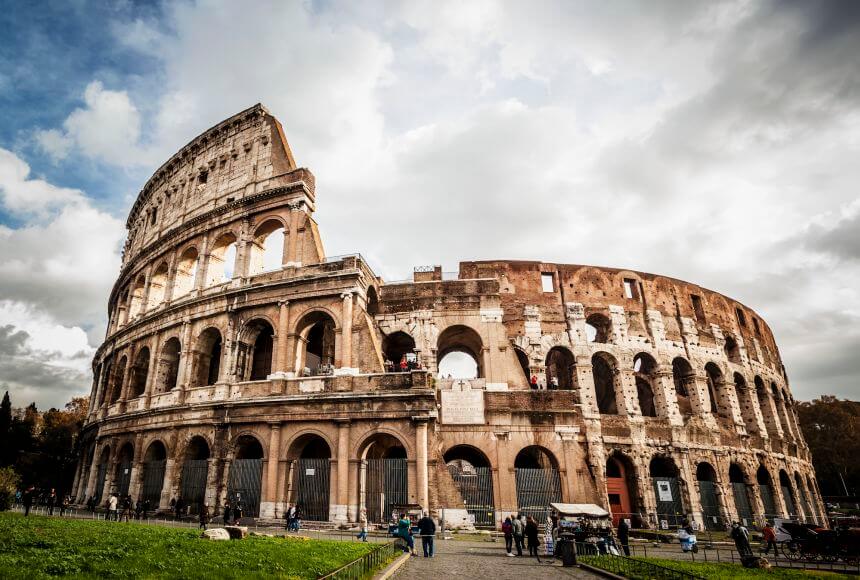
Roman Forum
The Roman Forum is one of the most symbolic sites of Rome city. It occupies a vast area that extends out between the Palatine and Capitoline Hills. This enormous area is filled with shops, crumbling columns, palaces, and the ruins of temples. The Roman Forum was the scene of law courts, public meetings, and gladiator combat. Once upon a time. It was the heart of the ancient world. It was also the hub of political, religious, and commercial life in the city. Its ruins are so old, and some of the ruins are almost 900 years old. The span time is around 500 BC to 400 C.E. The Roman Forum took place around 500 BC when the Republic of Rome started.
No signs are marking what they were used for. It is recommended to visit with a guide. The guide will help you to discover the complex of the Vestal Virgins from the Temple of Saturn.
Address: Via Della Salara Vecchia, 5/6, 00186 Roma RM, Italy
Time to Visit: 8:30 AM to 4:30 PM
Short Description of Roman Forum
Title: Roman Forum
Builder: Romulus and Remus
Culture: Italian
Place: Rome, Italy
Founded: 753 BC
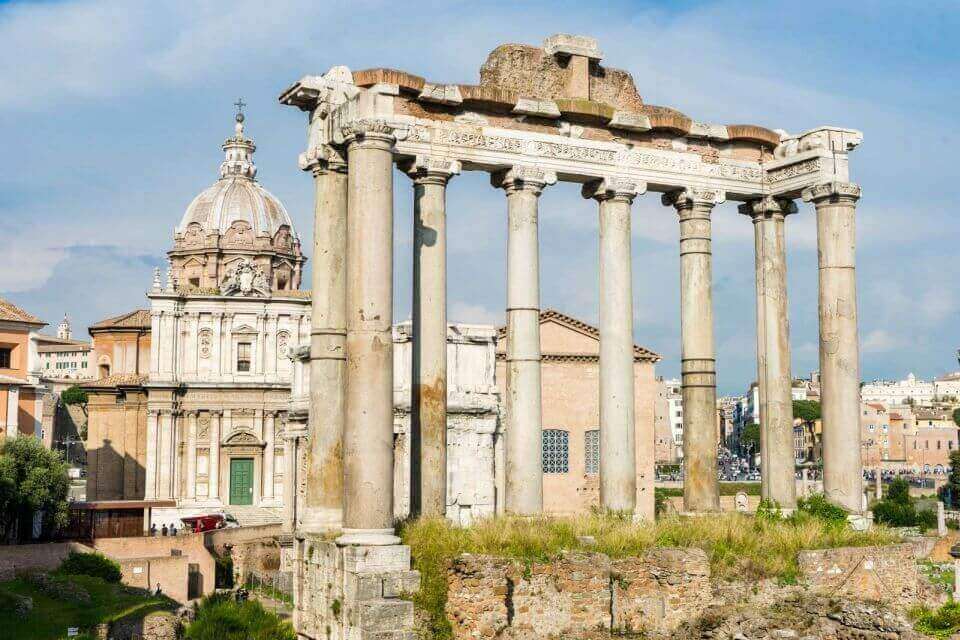
Old St Peter’s Basilica
St Peter’s Basilica is one of the most famous churches in the world. It is situated in Vatican City and also the Pope’s residence. According to the catholic Christian, it is the holiest place and base of the Catholic Church. Every year, vast Roman Catholic pilgrimages visit this church. Its landmark is so attractive to draw visitors. The most impressive feature of St Peter’s Basilica is its beautiful architectural design. Bramante, Michelangelo, Bernini, and Madero had left their sign on the structure, both inside and outside. Inside the St Peter’s Basilica, you will explore the intricate décor, enormous dome, vast obelisk, and baroque Baldacchino in the square. This church’s construction began in 360 CE by Pope Julius II.The structure was demolished in 1505. In the St Peter’s Basilica church, you can explore various art collections that have been preserved for more than five centuries.
Address: Piazza San Pietro, 00120 Città del Vaticano, Vatican City
Time to Visit: 7 AM to 7 PM
Short Description of Old St Peter’s Basilica
Title: St Peter’s Basilica
Builder: Constantine I
Culture: Italian
Place: Rome, Italy
Founded: 360 CE
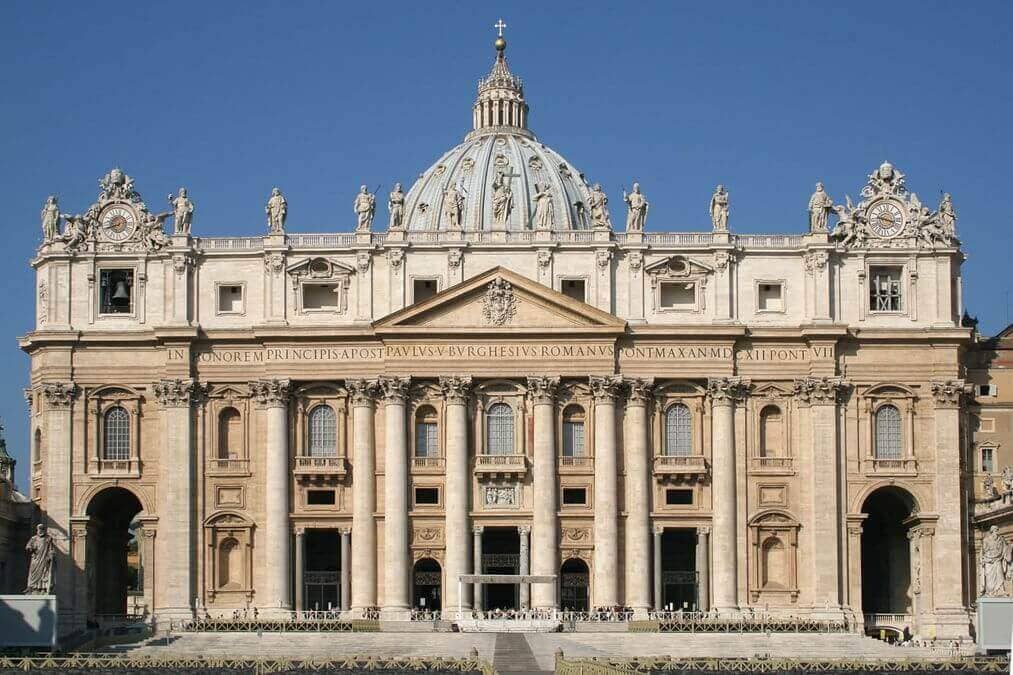
Arch of Constantine
The Arch of Constantine always remains on the must-see list to the tourist. You can find this site quickly because it is located right next to the Colosseum. You can get access without any ticket while visiting this site. The Arch of Constantine is situated in between the Colosseum and Palatine Hill. It is a symbol of triumph. Roman Emperor Constantine I built it after the conquest of the Milvian Bridge battle. He created it as a celebration of victory. Roman Emperor Constantine I defeated Emperor Maxentius in 312 CE at the Battle of Milvian Bridge. Emperor Maxentius wanted to occupy Rome. By defeating Emperor Maxentius, Constantine could consolidate his power. This victory also led him to the Roman Empire into Christianity. The senate of Rome granted this triumphal arch to Constantine. It was quickly erected and dedicated to Constantine in 315 AD.
Address: Via di San Gregorio, 00186 Roma RM, Italy
Time to Visit: 11 AM to 12 PM
Short Description of Arch of Constantine
Title: Arch of Constantine
Builder: Constantine I
Culture: Italian
Place: Rome, Italy
Founded: 315 CE

Arch of Septimius Severus Ruins
The Arch of Septimius Severus is one of the beautiful ruins in Rome. You can locate it within the compound of the Roman Forum. This Roman Arch is another triumphal symbol. Emperor Septimius Severus built this arch for his military victory to celebrate. The battle between Roman Emperor Septimius Severus and Parthian Empire occurred between 194 and 199 CE. Emperor Septimius Severus won against the Parthian Emperor, took possession of the Parthian capital, and reclaimed the Roman territory of the east side that they had lost before. For this reason, Emperor Septimius Severus was built in 203 CE to commemorate the victory against the Parthian Empire. It was used as a church for a long time. As a result, it is one of the best-preserved Roman ruins. This arch was dedicated to Emperor Septimus Severus to celebrate his victory.
Address: Via dell’Arco di Settimio, 00186 Roma RM, Italy
Time to Visit: Open 24 hours
Short Description of Arch of Septimius Severus Ruins
Title: Arch of Septimius Severus Ruins
Builder: Unknown maker, Italian
Culture: Italian
Place: Rome, Italy
Founded: 203 CE
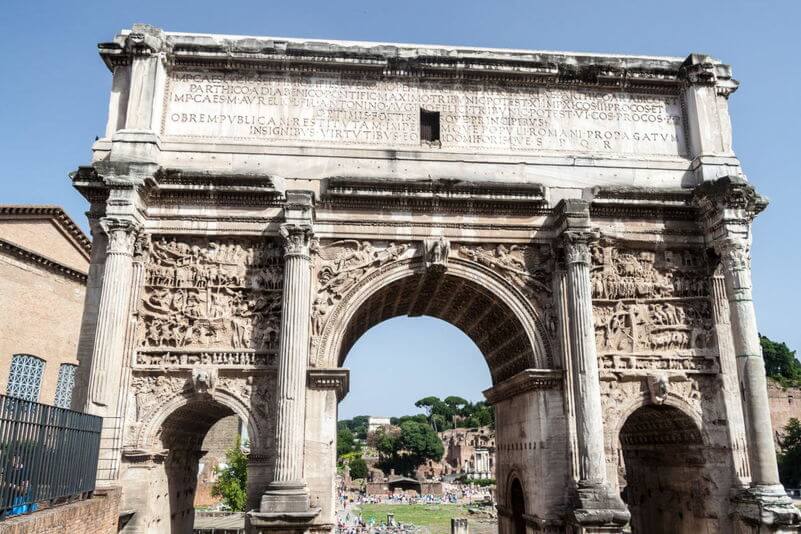
Domus Aurea
The Domus Aurea is also called Nero’s Golden Palace. It is one of Rome’s most beautiful historical ruins and is located close to the Colosseum. The meaning of Domus Aurea is Golden House. It has been considered the most ostentatious construction in the history of the Rome empire. Emperor Nero ordered the reconstruction of Domus Aurea to make it his residence in the Palatine after the Great Fire of Rome in 64 CE. This residence was built in 64–68 C.E. Nero made this extravagant palace for his own. No emperor, consul, or emperor of the Rome Empire ever had imagined what Nero had built and designed. Nero wanted to convert Rome into a new city called “Nerópolis” by constructing The Domus Aurea. You can find 300 halls and some faded mural paintings in the underground of the Domus Aurea. Nero loved various cultural activities. Many expensive materials were used in Nero’s palace to decorate it. This palace also has attractive ceilings filled with semi-precious stones and ivory, precious mosaic floors, fountains with an artificial lake, and pools. Before visiting Nero’s palace, collect a guided tour to avoid hassles.
Address: Via della Domus Aurea, 1, 00184 Roma RM, Italy
Time to Visit: 9 AM to 5 PM
Short Description of Domus Aurea
Title: Domus Aurea
Builder: Emperor Nero
Culture: Italian
Place: Rome, Italy
Founded: 64-68 CE

Ostia Antica
Ostia Antica is an ancient seaport and harbor town in ancient Rome. It is one of the most amazing places for tourists. Initially, it is a coast of the Mediterranean sea and the mouth of the Tiber River. It was founded in around 620 BC. The Romans conquered Ostia and reconstructed it as a naval base with a fort around 400 BC. Ostia became a busy commercial port when the Roman Empire controlled all the Mediterranean sea in 150 CE. This seaport had contributed to the flourishing Roman Empire because of its geographical position. Roman people were highly dependent on this seaport to bring their food and other things. Ostia Antica is the best-preserved historical ruins in Rome. You will explore the Amphitheater, warehouse, and temple while you are walking in the Ostia Antica.
Address: Viale dei Romagnoli, 717, 00119 Roma RM
Time to Visit: 4:30 PM to 7:00 PM
Short Description of Ostia Antica
Title: Ostia Antica
Builder: Ancus Marcius
Culture: Italian
Place: Rome, Italy
Founded: 620 BC
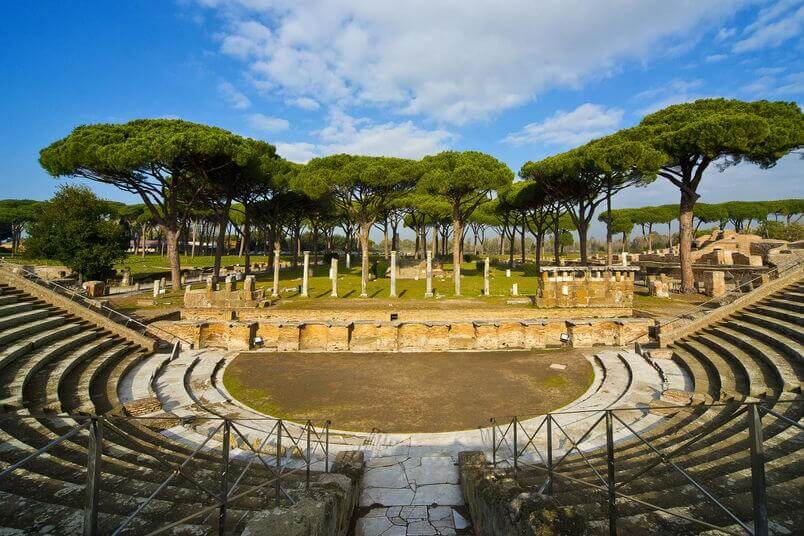
Temples of the Forum Boarium
The Temples of the Forum Boarium is one of the best-preserved temples of Rome. Both religious and commercial spots were marked and nuzzled by the River Tiber, Palatine, and Capitoline. It is constituted of two temples, the Temple of Portunus and the Temple of Hercules Victor. The Temple of Hercules Victor is dedicated to the Greek and Roman hero Hercules Victor. Both temples from the 2nd century BC were incorporated into churches during the Middle Ages, hence their current state. The Forum Boarium was a commercial center as well as a Roman cattle market. The Temple of Hercules Victor had 20 columns with a round structure. This temple was filled with marble and other valuable elements. It was built by L. Mummius Achaicus and destroyed Corinth. The Temple of Portunus was a larger and square structure dedicated to the Roman deity of rivers, ports, and harbors. The Mariners had paid with honor to their gods. Though the Forum Boarium was a Roman cattle market and a commercial, it was also the site of a gladiatorial contest center in 264 BC. It was said that the Forum Boarium was the first gladiatorial contest center of this city. The Temple of the Forum Boarium was converted into a medieval Christian church.
Address: Via Della Greca, 00186 Roma RM, Italy
Time to Visit: Open 24 hours
Short Description of Temples of the Forum Boarium
Title: Temples of the Forum Boarium
Builder: L. Mummius Achaicus
Culture: Italian
Place: Rome, Italy
Founded: 2nd century BC
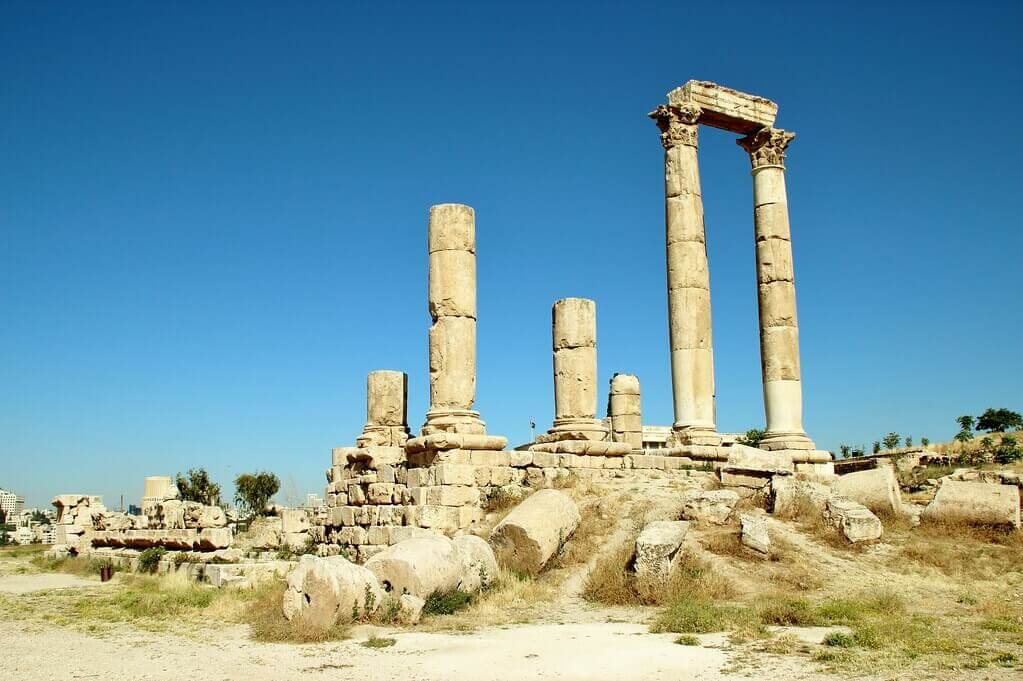
Villa Dei Quintili
Villa Dei Quintili was the largest and most magnificent residence of the Roman Empire. This resident house belonged to the Quintili brothers. Emperor Commodus took Villa Dei Quintili as imperial property. The two consuls had expanded this Villa between Via Appia Antica and Via Appia Nuova in 151 CE. They also built a large square around the Villa. Emperor Commodus loved to live in this place for peace. He loved to stay in the countryside and took thermal baths. The most attractive part of this structure is the main rooms. As it is a circular building, its rooms were built impressively. With a series of rooms and two large thermal rooms, it presents a precious Roman design. The two large thermal rooms have large windows fourteen meters high. The caldarium and the frigidarium controlled the bathing temperature and provided water according to the weather. The rooms were also built with polychrome marble. As this Villa was situated in the countryside, many famous artists were inspired to draw the sketch. You can explore various historical things in the Villa Dei Quintili. This place is preserved very carefully, and you can recognize the thermal baths.
Address: Via Appia Nuova, 1092, 00178 Roma RM, Italy
Time to Visit: 9 AM to 4:30 PM
Short Description of Villa Dei Quintili
Title: Villa Dei Quintili
Builder: Quintili brothers
Culture: Italian
Place: Rome, Italy
Founded: 151 CE
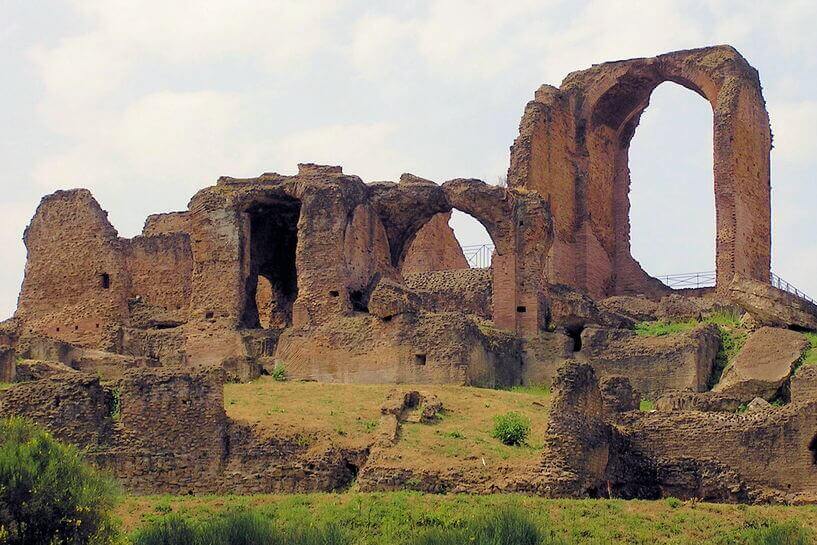
Theater of Marcellus
The Theater of Marcellus is one of the most attractive Roman ruins in Rome. It is the most ancient Roman theater that is surviving today. This theater was built by Julius Caesar between 7 and 11 BC. But it completed Marcus and was also dedicated to Claudius Marcellus, nephew of Augustus. It was an earlier theater that Marcus Aemilius Lepidus erected. You can locate it in the west of Capitoline Hill. The theater was destroyed, but Vespasian restored it. 11,000 to 40,000 people could sit and enjoy the theater. In the early 4th century, the theater fell out of use and was accepted as a quarry. Petronius Maximus restored the statues that were located inside the building in 421. He used it as a small residential building. In the early middle ages, the Theater of Marcellus used it as a fortress. This step saved the theater from further destruction. You can explore both Ionic and Doric when you wander in the grass area around the theater.
Address: Via del Teatro di Marcello, 00186 Roma RM, Italy
Time to Visit: Open 24 hours
Short Description of Theater of Marcellus
Title: Theater of Marcellus
Builder: Claudius Marcellus
Culture: Italian
Place: Rome, Italy
Founded: 7-11 BC
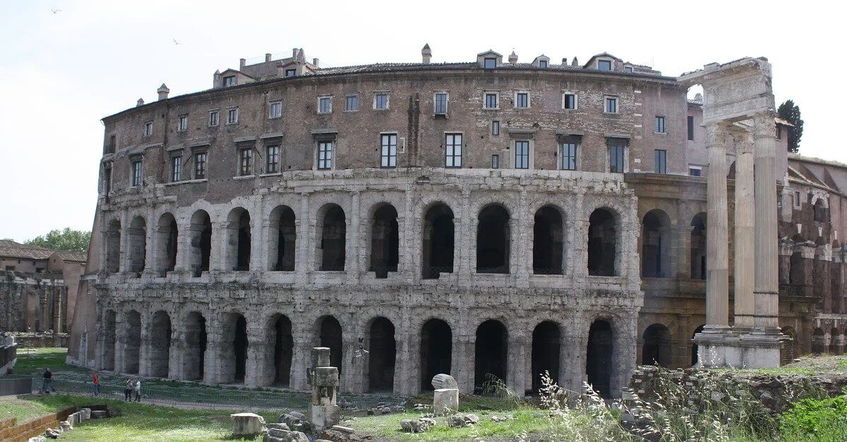
We hope that this article will help you to find Roman ruins in Rome city quickly. Don’t forget to purchase your tickets from Rome Tour Tickets to travel to your favorite historical places.

